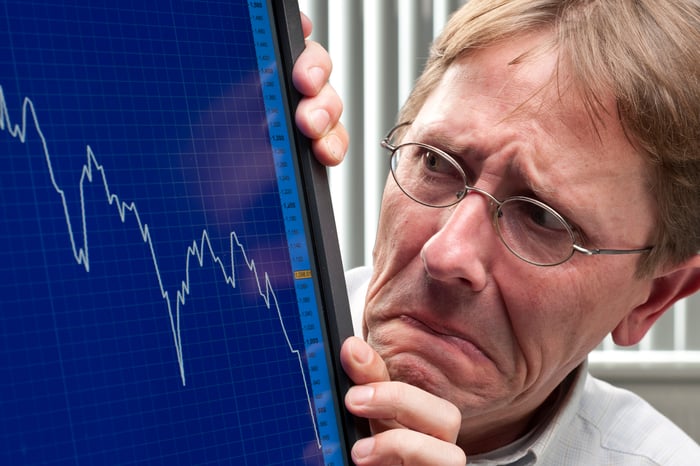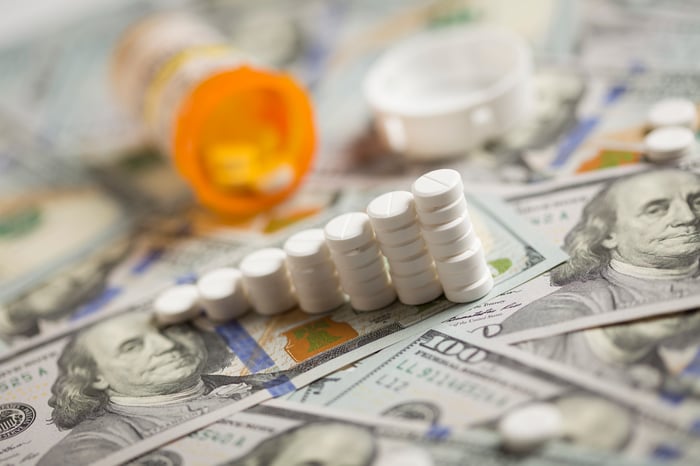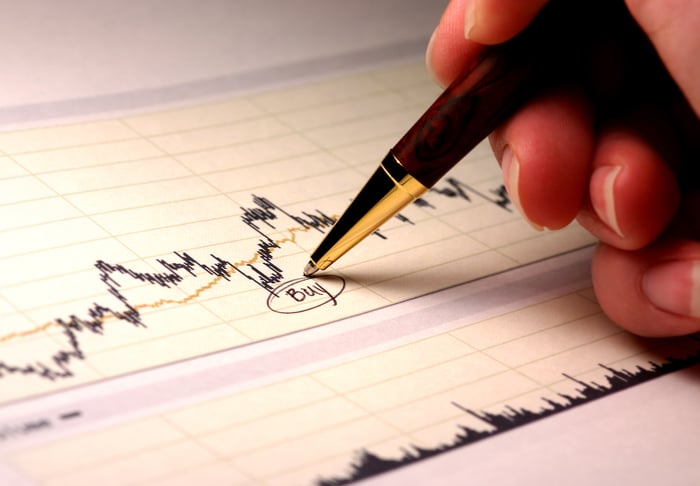Israeli-based Teva Pharmaceutical Industries (TEVA -3.04%) has had quite a run of bad luck. Like really, really bad luck. Its share price has been cut by roughly three quarters in less than two years, as a confluence of factors have weighed on its core businesses and made its outlook quite murky.
Teva throws the kitchen sink at its shareholders
In the company's second-quarter earnings report, which saw Teva slash its dividend by 75% and cut its full-year sales and profit forecast, management noted continuing weakness in the generic-drug pricing environment. As the largest manufacturer of generic drugs, Teva is more directly affected by generic-drug weakness than any other company, and it doesn't look as if this pricing weakness will stabilize in the next couple of quarters.

Image source: Getty Images.
In December, Teva and the Securities and Exchange Commission reached a settlement for violating the Foreign Corrupt Practices Act. Allegations were brought against Teva that it paid bribes to officials in Russia, Ukraine, and Mexico to boost sales in some of its core drugs. This settlement totaled $519 million, and the company's CEO and CFO left soon after.
The company has also been buried under $35.1 billion in debt, as of the end of the second quarter, primarily from its acquisition of generic-drug maker Actavis. This high level of debt is constraining its financial flexibility and forcing Teva to divest assets.
And as you might imagine, Teva is facing the prospect of numerous lawsuits on behalf of shareholders who've suffered losses over the past year and change. As a shareholder, I can attest that it's truly been a case of "what's next?" with Teva.
Six reasons to be bullish on Teva
However, unlike most Wall Street pundits who've recommended that investors keep their distance from Teva, I've been aggressively adding to my position over the past two months. There are six reasons I believe Teva could significantly appreciate in value from current levels over the long run.

Image source: Getty Images.
1. Teva has numerous levers it can pull to deleverage its balance sheet
To begin with, I believe Wall Street has underestimated just how easy it'll be for Teva to make headway on its debt pile. While I'm not making any excuses for the price it paid for Actavis, which in hindsight was way too much, Teva will have three separate streams of capital it can use to chip away at its debt.
First, the company has made no qualms about divesting non-core assets. Last month, the company announced the sale of ParaGard, a contraceptive devices manufacturer for $1.1 billion to Cooper Companies. The $1.1 billion price tag represents a hair bit more than 6.5 times what ParaGard generated in sales over the previous 12 months.
Just a week after the ParaGard divestment, Teva also announced the sale of the remainder of its women's health assets for $1.38 billion in two separate transactions. All told, the nearly $2.5 billion Teva received for women's health is more than 20% higher than it was anticipating. Ongoing divestments, which may next include its European oncology and pain assets, will generate quick cash that the company can use to pare down debt.
Second, the 75% reduction in its dividend saves Teva about $1 billion a year, which it'll be able to redirect toward lowering its debt.
And lastly, the company has been regularly generating around $4 billion in annual free cash flow (FCF). These recent divestments, along with generic pricing weakness, could affect that FCF in 2017 and 2018, but I believe it's still reasonable to expect annual FCF to top $2 billion. If Teva uses all of these tools, I believe it should be able to whittle its debt down by between $7 billion and $10 billion within the next 18 months.

Image source: Getty Images.
2. Generic-drug usage is on the rise
Even though generic drug pricing is weak now, I don't expect it to remain weak over the long run. A report from QuintilesIMS Institute for Healthcare Informatics showed that 88% of all prescriptions written in 2015 were for generics. By 2020, this figure should be closer to 91% to 92%. At the heart of this growth are two major trends: longevity and exclusivity.
In terms of longevity, data from most countries shows that people are living longer than ever. Within the U.S., the Census Bureau is projecting a near-doubling in the elderly population to 88 million from 48 million between 2015 and 2050. Since the elderly are far likelier to need prescription medicines, it seems logical to expect Teva, the largest generic-drug producer in the world, to benefit.
Exclusivity also helps Teva. Even though Teva has branded drug portfolio of its own, its generic portfolio has a seemingly endless supply of opportunities, given that brand-name drugs only have a 20-year period of exclusivity. This finiteness is a long-term opportunity for Teva.

Image source: Getty Images.
3. Teva has taken measures to protect Copaxone to the best of its ability
Thirdly, I've been impressed with Teva's resilience with regard to protecting its $4 billion-a -ear multiple sclerosis (MS) drug, Copaxone. The injectable drug has been the target of generic-drug manufacturers for years, but Teva has been able to fend them off by using the legal system to its advantage. While this won't work forever, it's bought Teva some time and added some much-needed FCF.
In addition, Teva wound up reformulating Copaxone into a three-times-weekly injection, as opposed to a daily injection. Not only is this more convenient for MS patients, but it may also be able to protect Copaxone from generic competition. Although a court ruling earlier this year suggested that Teva's new formulation probably won't be spared from generic competition, Teva has been masterful at using the legal system to its advantage.
4. It's resolved its CEO search
Fourth, the company's CEO search is over. Last month, Teva announced that it was hiring Kare Schultz as its new CEO. Schultz had served as CEO of H. Lundbeck A/S since 2015 and had also spent time with Novo Nordisk. More important, Schultz has played an integral role in restructuring efforts at the company's he's been with, which will be important given the many challenges that lie ahead for Teva.
Wall Street has obviously been concerned that without a strong CEO, Teva would be akin to a rudderless ship adrift at sea. However, with a focused leader at the helm who doesn't have his name tarnished with a bribery scandal, Teva should be able to get a fresh start.

Image source: Getty Images.
5. It continues to pay a healthy dividend
A lot of income investors were disappointed when Teva slashed its dividend by 75% to $0.085 a quarter from $0.34. But the move was absolutely necessary, considering that it'll save the company around $1 billion annually, which it'll then be able to divert toward repaying its debt. Nonetheless, Teva is still paying a very respectable yield of 2%, even with the reduction, which is on par with the average yield of the S&P 500. That means shareholders are getting paid at a slightly higher rate than the national inflation rate to simply hang on to Teva while it rights the ship.
6. It's exceptionally inexpensive relative to its peers
Finally, I've been aggressively buying Teva because it's exceptionally cheap compared with its peers. Even taking into account the preceding issues, Teva is valued at approximately four times next year's profit projections, and less than four times next year's cash flow per share. Comparatively, most large drugmakers tend to be valued between 10 and 15 times their forward earnings. A few years from now, after Teva has reduced its debt and generic drug prices have stabilized, it's my suspicion that Wall Street will once again be clamoring to buy into the long-term Teva growth thesis.



